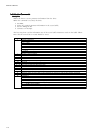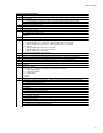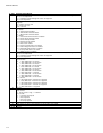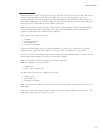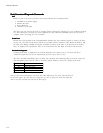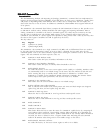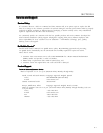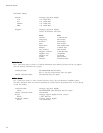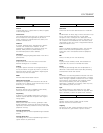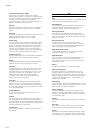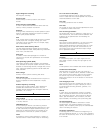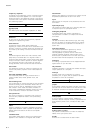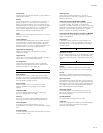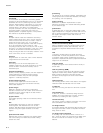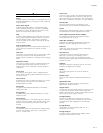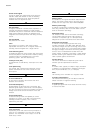
GLOSSARY
GL – 7
SS
SS
S
sector
A logical segment of information on a particular track. The
smallest addressable unit of storage on a disk. Tracks are
made of sectors.
sector pulse signal
A digital signal pulse present in hard sectored drives
which indicates the beginning of a sector. Embedded
servo pattern or other prerecorded information may be
present on the disk when sector is active.
seek
A random access operation by the disk drive. The act of
moving a set of read/write heads so that one of them is
over the desired cylinder. The actuator or positioner
moves the heads to the cylinder containing the desired
track and sector.
seek complete signal
A digital signal level which indicates that the positioner is
not moving and is located over a cylinder or offset
position.
seek time
The amount of time between when a step pulse or seek
command is issued until the head settles onto the
desired cylinder. Sometimes is measured without settling
times.
sequential access
The writing or reading of data in a sequential order such
as reading data blocks stored one after the other on
magnetic tape. This is contrasted to random access of
information.
servo burst
A momentary servo pattern used in embedded servo
control systems usually positioned between sectors or at
the end of a track.
servo control
A technique by which the speed or position of a moving
device is forced into conformity with a desired or
standard speed or position.
servo head
A magnetic head designed specifically for accurately
reading servo data.
servo pattern
A readback signal that indicates the position of a head
relative to a track.
servo surface
A recording surface in a multi-surface disk drive that only
contains control information which provides timing, head
position, and track-following information for the data
surfaces.
servo system
An automatic system for maintaining the read/write head
on track; can be either “open loop,” “quasi-closed
loop,” or “closed loop.”
servo track
A track on a servo surface. The prerecorded reference
track on the dedicated servo surface of a disk drive. All
data track positions are compared to their corresponding
servo track to determine “off track”/”on track” position.
settling time
The time it takes a head to stop vibrating, within
specified limits, after it reaches the desired cylinder.
silicon
Semiconductor material generally used to manufacture
microprocessors and other integrated circuit chips.
small computer system interface (SCSI)
An intelligent interface that incorporates controller
functions directly into the drive.
S.M.A.R.T. capability
Self-Monitoring Analysis and Reporting Technology.
Prediction of device degradation and/or faults.
soft error
A data error which can be overcome by rereading the
data or repositioning the head.
soft sectored
A technique where the controller determines the
beginning of a sector by the reading of format
information from the disk. This is contrasted to hard
sectoring where a digital signal indicates the beginning of
a sector on a track.
software
Applications programs, operating systems, and other
programs (as opposed to hardware).
spindle
The rotating hub structure to which the disks are
attached.
spindle motor
The motor that rotates the spindle and therefore the
disks.
sputtered media
Magnetic disk or tape that has the magnetic layer
deposited by sputtering means.
stepper motor
A motor that has known detent positions where the rotor
will stop with the proper control in some cases. The
digitally controlled motor moves the head positioner from
track to track in small, step-like motions.
storage capacity
The amount of data that can be stored in a memory
location, usually specified in kilobytes for main memory
and floppy drives and megabytes for mass storage
devices.
storage density
Usually refers to recording density (BPI, TPI, or a
combination of the two.)
storage location
A memory location, identified by an address where
information may be read or written.



